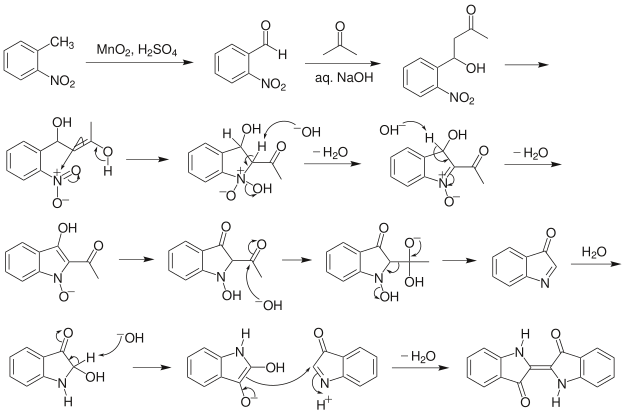Baeyer–Drewson indigo synthesis
The Baeyer–Drewson indigo synthesis (1882) is an organic reaction in which indigo is prepared from 2-nitrobenzaldehyde and acetone[1][2] The reaction was developed by von Baeyer in 1880 to produce the first synthetic indigo at laboratory scale. This procedure is not used at industrial scale.[3]

The reaction is classified as an aldol condensation. As a practical route to indigo, this method was displaced by routes from aniline.[4]
Mechanism[]

Note[]
In the English literature this reaction is usually called Baeyer–Drewson reaction, although the author of the original paper was called Drewsen.
References[]
- ^ Adolf Baeyer, Viggo Drewsen (1882). "Darstellung von Indigblau aus Orthonitrobenzaldehyd". Berichte der deutschen chemischen Gesellschaft. 15 (2): 2856–2864. doi:10.1002/cber.188201502274.
- ^ Helmut Schmidt (1997). "Indigo – 100 Jahre industrielle Synthese". . 31 (3): 121–128. doi:10.1002/ciuz.19970310304.
- ^ "404".
- ^ Elmar Steingruber "Indigo and Indigo Colorants" Ullmann's Encyclopedia of Industrial Chemistry 2004, Wiley-VCH, Weinheim. doi: 10.1002/14356007.a14_149.pub2
External links[]
Categories:
- Nitrogen heterocycle forming reactions
- Organic reactions
- Name reactions